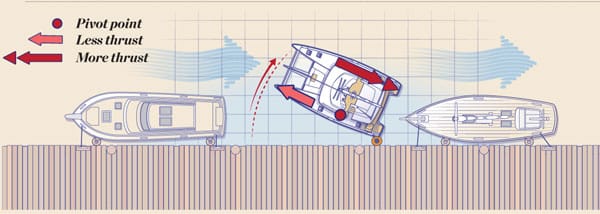
cat1.jpg
With strong current sweeping from ahead and boats fore and aft, use a fender on the stern quarter to swing the bows clear. Apply just enough thrust with the port engine to keep the boat from going backward into the dock; a spring line may be helpful. Power in reverse on the starboard engine until the bows are clear, then shift to forward to get under way. Tim Barker

cat2.jpg
With the current coming from the opposite direction, the same basic technique is used to swing the stern off the pier. One of the great benefits in handling twin-screw catamarans is that they’re equally maneuverable in either direction. Tim Barker
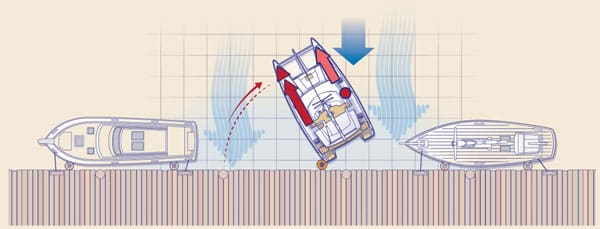
cat3.jpg
When the wind and/or current is abeam, use just enough forward thrust on the starboard engine to keep the boat stable and aid the turn, and more forward thrust on the port engine to spin the cat’s bows clear of other boats and into the current. Tim Barker
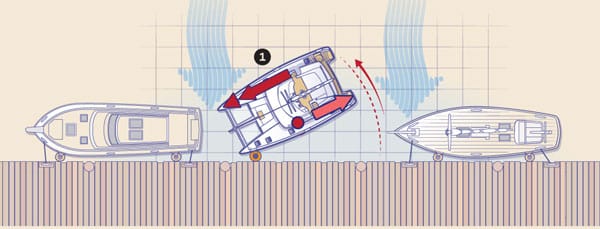
cat4.jpg
The diagram shows the first step to get off a dock when there’s no significant wind or current (which is also a great time to practice). To begin, first maneuver the bows in toward the dock to push the stern out and away from the pier. Tim Barker
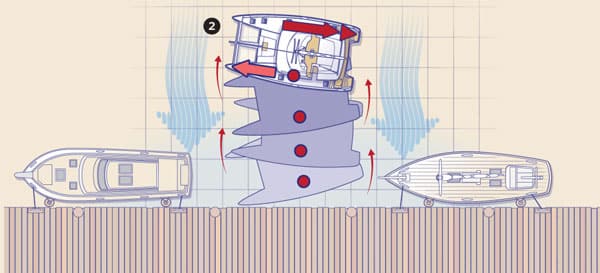
cat5.jpg
Once the stern is off the dock, reverse the throttles and engine directions to pull the bows away as well. By repeating the procedure in slow, incremental steps, you can successfully “walk” the boat safely away from any obstacles and into open water. Tim Barker
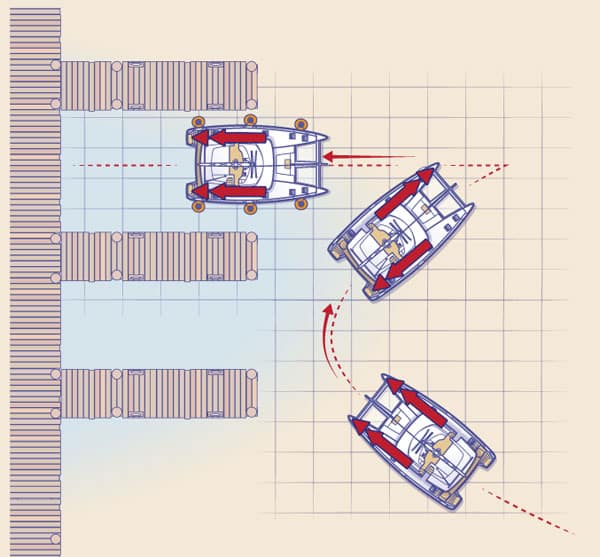
cat6.jpg
Backing into a slip gives the helmsman better visibility and also the option of bailing out if things go wrong. In tight quarters, execute a K-turn to get the sterns parallel to the dock space before reversing in. Tim Barker
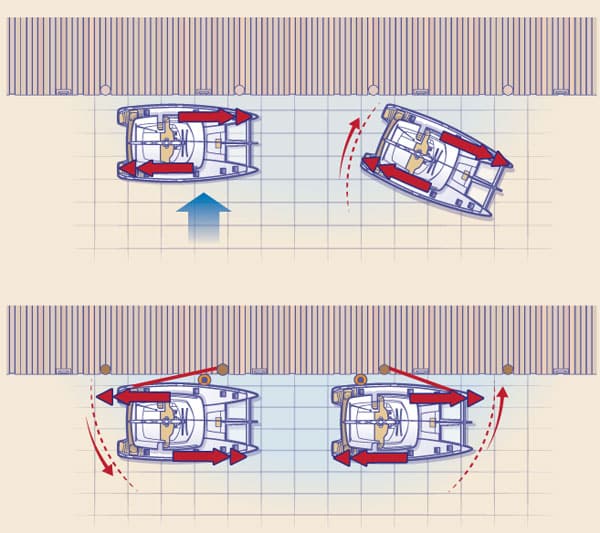
cat7.jpg
When parallel to a leeward dock, putting the windward engine in reverse (top) will keep the stern close in. The judicious use of fenders and spring lines (above) will help facilitate maneuvering. Tim Barker
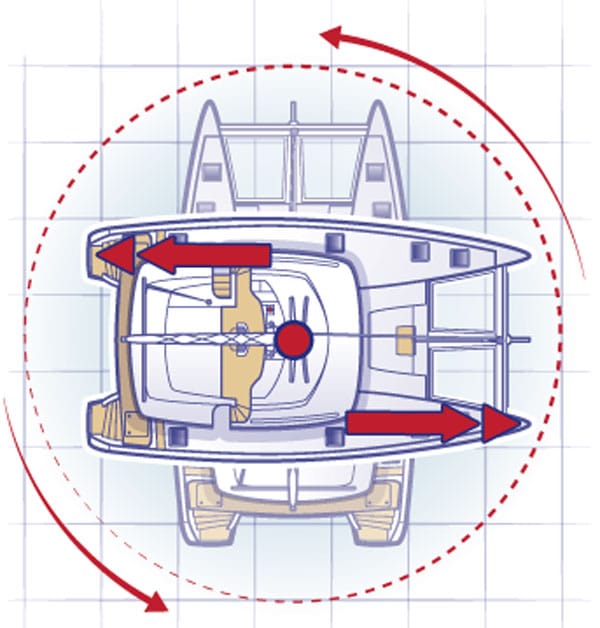
cat8.jpg
By advancing one throttle and reversing the other in equal measure (above), a cat will rotate on its centerline axis and complete a 360-degree pivot, without moving fore or aft, within its own length. In the accompanying illustrations, the red dots represent pivot points. The double arrows symbolize “more thrust,” which means enough thrust to move the boat fore or aft. A single arrow is the symbol for “less thrust,” which means there’s just enough throttle to restrict that hull from going fore or aft, basically keeping it stationary. Rudders remain neutral for most maneuvers. Tim Barker








